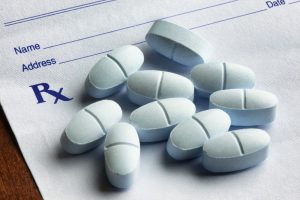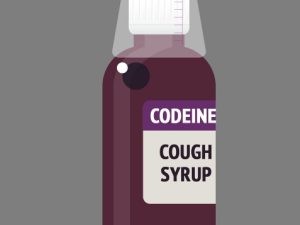There are different treatment options for oxycodone rehab, but the best option is determined by the individual’s current needs to ensure the safest outcome. Oxycodone rehab is a comprehensive addiction treatment approach involving multiple components and processes. In this article, we will explore the various stages of oxycodone rehab and how they work to help individuals achieve lasting recovery.
Assessment and Treatment Planning
The first step in oxycodone rehab is a thorough assessment conducted by healthcare professionals and addiction specialists. This evaluation helps determine the severity of addiction, physical and mental health status, and co-occurring disorders. Gathering this information enables the development of an individualized treatment plan tailored to address specific needs and goals.
Detoxification
For individuals with physical dependence on oxycodone, the next phase is detoxification. This process involves the removal of oxycodone from the body, allowing individuals to overcome withdrawal symptoms and achieve stability. Medical supervision during detox ensures safety and comfort while managing potential complications. Medications may be administered to alleviate withdrawal symptoms and ease the detoxification process.
Therapeutic Interventions
Once detoxification is complete, individuals transition to the therapeutic phase of rehab. Various evidence-based therapies are employed to address the psychological, emotional, and behavioral aspects of addiction. Therapy plays a vital role in oxycodone rehab, helping individuals address the underlying causes of addiction, develop coping mechanisms, and acquire the necessary skills for long-term recovery.
Dual Diagnosis Treatment

Many individuals with oxycodone addiction also have underlying mental health conditions. Dual-diagnosis treatment addresses both addiction and co-occurring disorders simultaneously. This integrated approach ensures that mental health issues are effectively diagnosed, managed, and treated alongside the addiction. Medication management may be included if necessary.
Relapse Prevention and Life Skills
Rehab programs equip individuals with essential relapse prevention techniques and life skills for long-term recovery. Education about the dangers of oxycodone addiction, triggers, and coping strategies is provided. Individuals learn to identify high-risk situations, develop healthy habits, and establish a support network to maintain sobriety beyond rehab.
Aftercare Planning
Aftercare planning becomes crucial as individuals near the end of their formal rehab program. Aftercare refers to the ongoing support and resources provided to individuals after rehab. It typically includes continued therapy, participation in support groups such as Narcotics Anonymous (NA), and access to community resources. Aftercare ensures that individuals have the necessary support system to sustain their recovery and navigate challenges in their daily lives.
Long-Term Support
Recovery from oxycodone addiction is an ongoing process. Long-term support is vital to help individuals maintain their sobriety and prevent relapse. This support may include continued therapy, participation in support groups, and access to community resources.
Inpatient Vs. Outpatient Oxycodone Rehab
When seeking treatment for oxycodone addiction, individuals have two primary options: inpatient and outpatient rehab. Each treatment approach offers unique benefits and is suited for different circumstances. Understanding the differences between inpatient and outpatient oxycodone rehab can help individuals and their loved ones make informed decisions about the most suitable treatment path. In this article, we will explore the contrasting features of inpatient and outpatient rehab to assist individuals in finding the best treatment option for their needs.
Inpatient Oxycodone Rehab
Inpatient rehab, also known as residential rehab, involves individuals residing at a treatment facility for a specified period, usually ranging from a few weeks to several months. Here are some key aspects of inpatient oxycodone rehab:
- 24/7 Support and Supervision: Inpatient treatment provides round-the-clock support and supervision from healthcare professionals and addiction specialists. This constant presence ensures individuals receive immediate assistance, guidance, and medical attention when needed.
- Structured Environment: Inpatient rehab offers a highly structured environment with a predetermined daily schedule that includes therapy sessions, group activities, meals, and recreational opportunities. The structured nature of inpatient treatment provides stability, routine, and a clear focus on recovery.
- Intensive Therapy: Inpatient rehab typically offers a comprehensive range of therapeutic interventions, including individual counseling, group therapy, family therapy, and specialized modalities such as cognitive-behavioral therapy (CBT) or dialectical behavior therapy (DBT). These intensive therapy sessions aim to address the underlying causes of addiction, develop coping mechanisms, and provide tools for sustainable recovery.
- Immersive Recovery Experience: By residing in a rehab facility, individuals in inpatient treatment are removed from their regular environments and daily triggers associated with substance abuse. This immersion in a supportive and drug-free setting allows individuals to focus solely on their recovery without distractions or temptations.
- Peer Support and Community: Inpatient treatment facilitates connection with peers who are also on the path to recovery. The shared experiences and camaraderie in group therapy sessions and communal living foster a sense of community and support. Peer interactions can provide motivation, accountability, and the opportunity to learn from others facing similar challenges.
Outpatient Oxycodone Rehab

Outpatient rehab offers individuals the flexibility to live at home while attending treatment sessions at scheduled times. Here are the key features of outpatient oxycodone rehab:
- Flexibility and Independence: Outpatient treatment allows individuals to maintain their daily responsibilities, such as work, school, or caregiving while receiving treatment. This flexibility is particularly beneficial for those who cannot take an extended break from their obligations or have strong support systems at home.
- Part-Time Treatment: Unlike the immersive nature of inpatient rehab, outpatient treatment typically involves attending therapy sessions a few times per week, allowing individuals to continue with their regular routines. Treatment schedules are designed to accommodate individuals’ availability and can be adjusted as progress is made.
- Individualized Therapy: Outpatient rehab offers individual therapy sessions where individuals can address personal challenges, explore underlying issues related to addiction, and develop coping strategies. These one-on-one sessions provide personalized attention and focus on the specific needs and goals of the individual.
- Group Therapy and Support: Similar to inpatient rehab, outpatient treatment incorporates group therapy sessions to foster peer support and create a sense of community. Sharing experiences, learning from others, and developing a support network can be instrumental in the recovery process.
- Integration into Real-Life Situations: Outpatient rehab provides opportunities for individuals to apply the skills and strategies learned in treatment to real-life situations immediately. This integration helps individuals practice relapse prevention techniques, cope with triggers, and develop effective strategies for long-term sobriety.
Deciding that you want to live a sober lifestyle and address your oxycodone use problem is the first step toward recovery. There are multiple resources to help you make your decision regarding treatment options. Ultimately, your treatment facility can provide all types of support based on your lifestyle and recovery needs.



